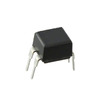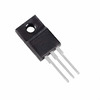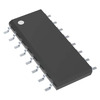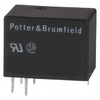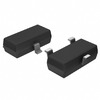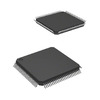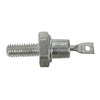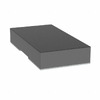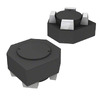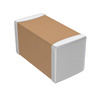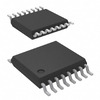Unlocking DHT22: The Ultimate Sensor Guide
The DHT22 sensor, renowned for its precise humidity and temperature measurement capabilities, serves a diverse range of applications from projects to advanced environmental monitoring systems. This digital sensor leverages high accuracy to provide data that enhances decision-making and environmental management. This article delves into the features, applications, and practical insights of the DHT22, illustrating its importance in various industrial and recreational contexts.Catalog
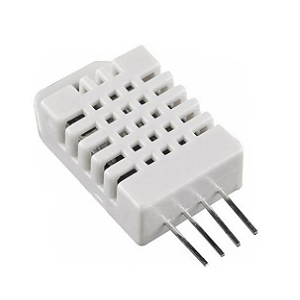
What is the DHT22 Sensor?
The DHT22, also recognized as the AM2302 or RHT03, stands out in delivering high-precision measurements across a range of applications. It combines an accurate temperature sensor with a capacitive humidity sensor, utilizing advanced digital signal acquisition methods. This design approach guarantees reliability and enhances its applicability in both stable and dynamic environments. The integration of an 8-bit microcontroller signifies engineering prowess, offering swift data response and resilience against electromagnetic interference, making it well-suited for interference-prone settings. The DHT22 demonstrates its value in various sectors, including HVAC systems, weather stations, and agricultural monitoring. Each sector reaps the benefits of its precision. For instance, in agriculture, precise temperature and humidity readings contribute to optimizing crop yields, underscoring the role of dependable sensors in this intricate environment.
DHT22 Pin Configuration
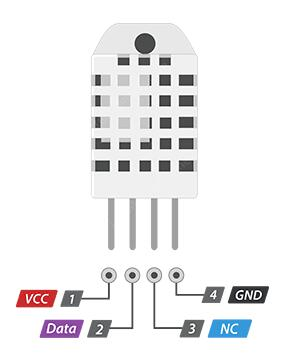
|
Pin Number |
Pin Name |
Description |
|
1 |
VCC |
Pin supplies power for the sensor. Although supply
voltage ranges from 3.3V to 5.5V, a 5V supply is recommended. In case of a 5V
power supply, you can keep the sensor as long as 20 meters. However, with a
3.3V supply voltage, cable length shall not be greater than 1 meter.
Otherwise, the line voltage drop will lead to errors in measurement. |
|
2 |
Data |
The pin is used to communicate between the sensor and the
microcontroller. |
|
3 |
NC |
Not connected |
|
4 |
GND |
Should be connected to the ground of Arduino. |
DHT22 Symbol, Footprint, and CAD Model
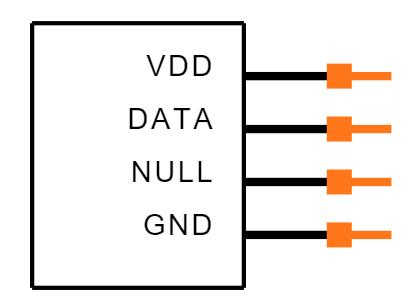

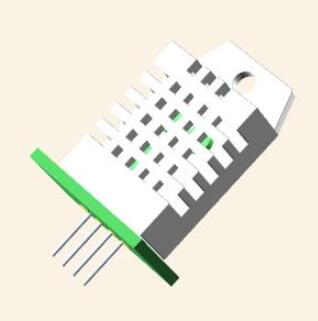
DHT22 Technical Specifications
|
Type |
Parameter |
|
Packaging |
Box-packed |
|
RoHS Status |
RoHS Compliant |
Features of the DHT22
Sleek Structure and Energy Efficiency
The DHT22 is characterized by its sleek design and frugal energy consumption, fitting seamlessly into an array of environmental monitoring setups. Its compact form is like a core for easy system integration. With its energy-saving attributes, the sensor gracefully extends battery life, appealing to distant and self-powered installations.
Prolonged Signal Reach
Equipped for transmitting signals beyond 20 meters, this sensor finds its niche in far-reaching monitoring settings, such as sprawling greenhouses or vast storage areas. These features cater to scenarios demanding notable distances from the sensor to the data processing unit, thereby diminishing the reliance on extra signal amplification measures.
Precisely Tuned Humidity Sensing
The DHT22 delivers humidity readings ranging from 0 to 99.9 %RH, staying within an impressive ±2% accuracy. In sectors like pharmaceuticals or food storage, where specific humidity levels are a mainstay, such precision is a true asset. Through calibration and ongoing upkeep, sustained accuracy and reliability are well within reach throughout the sensor's lifespan.
Reliable Temperature Detection
This sensor adeptly measures temperatures spanning from -40 to 80°C with a keenness of ±0.5°C. Where temperature shifts can be a game changer, such as in chemical manufacturing or climate control, this precision aids in maintaining ideal conditions. Regular checks against standardized calibrations can bolster trust in its readings, ensuring environments remain just right.
Applications of the DHT22
Local Weather Stations
Local weather stations gain substantial advantages from incorporating DHT22 sensors. These sensors provide accurate temperature and humidity data for precise weather forecasting. Quality data collected over time allows meteorologists to identify climate patterns and evaluate weather changes. This reliability aids in making sound weather forecasting decisions, influencing agricultural strategies and disaster readiness.
Automated Climate Control
The DHT22 sensor plays a role in automated climate control systems, used in residential, commercial, and industrial environments to maintain desirable climate conditions and ensure comfort and energy efficiency. By providing continuous ambient condition updates, these sensors help regulate HVAC systems, leading to energy savings. System implementers often focus on fine-tuning and regular servicing, learning from operational subtleties, achieving notable energy conservation over time. Through DHT22, environmental comfort is promoted, aligning with sustainability objectives by minimizing energy use.
Environmental Monitoring Systems
In environmental monitoring setups, DHT22 contributes to assessing ecosystem health by providing accurate climate data. Careful sensor management ensures long-term data reliability, a practice that environmental scientists adhere to rigorously. This methodology provides insights into climate change impacts, biodiversity patterns, and habitat viability, playing a role in global conservation initiatives.
Alternatives to the DHT22 Sensor
• DHT11
• AM2302
• SHT71
Integrating DHT22 with Arduino
Connecting a DHT22 sensor to an Arduino board is an intuitive process, largely due to the sensor's design with 0.1-inch pitch pins. These pins are made for easy insertion into a breadboard, establishing a simple physical connection. Powering the sensor involves supplying a steady 5V and ensuring a solid ground connection. Additionally, the sensor's Data pin must be interfaced with a specific digital pin on the Arduino to complete the setup. For the DHT22 to work efficiently, it needs a steady supply of 5V. The sensor's VCC pin should be directly connected to the Arduino's 5V pin. A direct and reliable ground connection is needed, which means linking the sensor's ground pin to the Arduino's ground. This arrangement helps maintain measurement accuracy, reflecting the importance of precise connections in electronics. A careful connection of the Data pin from the DHT22 to one of the Arduino's digital pins is required to ensure clarity in data transmission. Introducing a 10KΩ pull-up resistor between the VCC and the data line enhances the signal, reducing the risk of data corruption. This level of attention is reflective of practices in sensor integration worldwide, illustrating the pursuit of fidelity in hardware configurations.
Use Cases for the DHT22 Sensor
Systems for Environmental Monitoring
In environmental systems, the DHT22 demonstrates heightened value with its accurate readings. These systems often rely on time data to evaluate and anticipate weather changes, establishing the sensor as an important component. With dependable data streams, stakeholders can make well-informed decisions to lessen environmental impacts.
Applications in Agriculture
For agriculture, it is good to maintain optimal conditions for plant growth. By deploying DHT22 sensors in greenhouses and open fields, farmers can effectively track microclimates. The success of crops largely depends on precise climate control, and these sensors offer insights into ambient conditions. Many farmers have observed notable enhancements in crop health due to technology utilization.
HVAC Systems and Home Automation
In HVAC systems, the DHT22 ensures efficient operation by facilitating precise climate control in both residential and commercial premises. Accurate readings of humidity and temperature allow these systems to optimize energy use and enhance comfort. Home automation systems increasingly depend on such sensors to cultivate intelligent and adaptive living spaces.
Industrial and Research Laboratory Settings
Industrial contexts and research laboratories also gain from the DHT22's reliability in controlled monitoring environments. Ensuring that equipment and research samples stay within specified environmental parameters, necessitating robust sensor integration. This thoughtful implementation supports maintaining operational integrity and progressing scientific pursuits.
Devices for Health and Wellness
The adaptability of the sensor is further exemplified in emerging health and wellness applications. Personal environment monitoring devices, such as wearable technology, frequently incorporate this sensor. The relationship between accurate environmental data and overall well-being helps recognize potentially unhealthy surroundings, enabling timely responses.
Operational Dynamics of DHT22
The DHT22 sensor incorporates a capacitive humidity sensor, integrated with an NTC thermistor. This setup operates on resistance-based temperature measurement principles. By converting changes in the environment into digital signals, DHT22 enables devices like Raspberry Pi to decode these variations with exceptional precision. This technological blend within the DHT22 exemplifies a harmonious connection between physical phenomena and digital interpretation, promoting advanced environmental tracking. DHT22's capacitive humidity sensor gauges the electrical capacitance of the air around it. The varying capacitance with humidity levels allows effective change detection. In practical applications, whether within a lab or out in the open for weather assessments, DHT22 ensures dependable data collection. The sensor's intricate operation strikes a balance between sensitivity and consistency, resulting in finely tuned readings.
Temperature fluctuations impact the resistance of DHT22's NTC thermistor; an increase in temperature leads to decreased resistance. This principle guarantees precise temperature readings, providing reliability across diverse temperature conditions. This technology finds its use in settings like greenhouses and HVAC systems. Data from the sensor are digitally formatted, facilitating smooth interaction with microcontrollers like the Raspberry Pi. Digital interfacing reduces data transmission errors for scenarios demanding precision. Moreover, DHT22's adaptability with popular programming environments broadens its application, stimulating innovation in various tech domains. This digital evolution highlights a trend towards more cohesive technological ecosystems.
Advanced Utilization of DHT22 Sensors

The DHT22 sensor offers ease in integration with microcontrollers, like the Arduino Uno, due to its pre-calibrated serial output. This characteristic enables swift implementation via established libraries, which configures the sensor efficiently. A deep dive into these libraries not only facilitates seamless integration but also empowers to tweak settings, harnessing the sensor for tailored applications. Utilizing established libraries for DHT22 sensors can considerably reduce configuration and data retrieval time. These libraries simplify intricate processes, allowing to channel their efforts into application-specific innovations while sidestepping complex communication protocols. Data accuracy is an important component in monitoring environmental conditions. Deploying DHT22 sensors in controlled settings allows for enhanced accuracy and dependability. Adjusting the sensor's calibration based on initial readings can sharpen measurement accuracy, showcasing a sophisticated grasp of adaptive sensor data use. Pairing sensor data with other environmental metrics can provide in-depth insights, enhancing the information's relevance for specific uses.
Comparing DHT11 and DHT22/AM2302
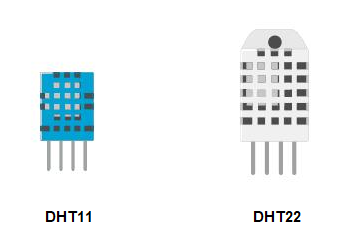
The DHT22 sensor offers improvements in environmental monitoring capacity. It is capable of measuring temperatures from -40 to +125°C with an accuracy of ±0.5°C. On the other hand, the DHT11 is limited to a 0 to 50°C range. The DHT22 provides humidity measurements spanning from 0 to 100%, maintaining an accuracy range of 2-5%, unlike the DHT11, which is confined to a 20-80% range. This makes the DHT22/AM2302 more suitable for settings where accurate monitoring under extreme conditions adds immense value.
|
Specifications |
DHT11 |
DHT22 |
|
Operating Voltage |
3 to 5V |
3 to 5V |
|
Max Operating Current |
2.5mA max |
2.5mA max |
|
Humidity Range |
20-80% / 5% |
0-100% / 2-5% |
|
Temperature Range |
0-50°C / ± 2°C |
-40 to 80°C / ± 0.5°C |
|
Sampling Rate |
1 Hz (reading every second) |
0.5 Hz (reading every 2 seconds) |
|
Body Size |
15.5mm x 12mm x 5.5mm |
15.1mm x 25mm x 7.7mm |
|
Advantage |
Ultra low cost |
More Accurate |
DHT22 Application Guidelines
Operating and Storage Recommendations
Keep the DHT22 sensor within the specified humidity range outlined in the product documentation. Although it can recalibrate itself after exposure to extreme conditions, such exposure may accelerate sensor degradation over time.
Protection Against Chemical Exposure
Avoid exposing the sensor to chemical vapors, as they can damage its sensitive components and reduce its accuracy in humidity measurement.
Sensor Recovery Procedure
To restore sensor accuracy, start by placing the sensor in an environment of 50-60°C with less than 10% relative humidity for two hours. Then move it to an environment of 20-30°C with more than 70% relative humidity for five hours.
Temperature Sensitivity
Since temperature affects relative humidity readings, the DHT22 incorporates temperature compensation technology. For optimal performance, keep the sensor at a stable temperature, away from sources of heat.
Sensitivity to Light
Prolonged exposure to strong light or UV rays can degrade the DHT22’s performance. Protect the sensor from direct light to maintain its reliability.
Connection Wire Quality
The quality of connection wires impacts both data integrity and transmission range. It’s recommended to use high-quality, shielded wires to ensure optimal performance.
Additional Precautions
Ensure soldering temperatures do not exceed 260°C. Avoid operating the sensor in environments where condensation may form. Do not use the DHT22 in life-critical or emergency stop applications, as sensor failure could lead to injury.
About us
ALLELCO LIMITED
Read more
Quick inquiry
Please send an inquiry, we will respond immediately.
Frequently Asked Questions [FAQ]
1. Is DHT22 waterproof?
Designed with a casing that effectively shields its internal components, the DHT22 offers a degree of water resistance that aids in its long-term functionality. Its 4-pin design not only facilitates seamless installation but also adds to its resilience across diverse settings. However, extended immersion in water could potentially affect the sensor's durability. In damp environments, exploring additional protective strategies and thoughtful housing designs can extend the sensor's lifespan.
2. How many pins are packaged and interchangeable?
4 pins.
3. How does a DHT22 work?
Engineered for cost efficiency, the DHT22 sensor outputs digital signals through its capacitive humidity sensor combined with a thermistor. This process relies on precise timing protocols to capture accurate data, a skill that might pose challenges to novices yet remains for precision in measurements.
4. What is the difference between DHT11 and DHT22?
In comparing DHT11 and DHT22, one must reflect on the balance between sampling speed and measurement accuracy. The DHT11 is notable for its quicker sampling rate and smaller footprint, whereas the DHT22 excels with its greater accuracy over a wider spectrum of humidity and temperature levels. Choosing the right sensor demands a thoughtful analysis of the specific requirements of each application.
5. What is the long transmission distance of DHT22?
Capable of data transmission up to 20 meters, the DHT22 sensor adapts to a broad array of applications. However, its effectiveness can be influenced by factors like electromagnetic interference and physical obstructions. Implementing robust layout strategies and effective shielding techniques can mitigate such challenges, ensuring the sensor retains its efficiency across its full transmission range.
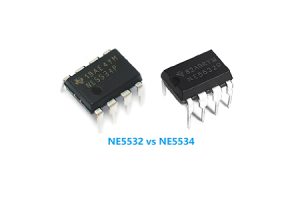
Comparing NE5532 and NE5534 Op-Amps: What Sets Them Apart?
on November 11th
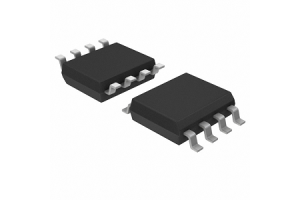
LM393D Comparator: Features, Specifications, and Datasheet
on November 11th
Popular Posts
-

What is GND in the circuit?
on January 1th 3152
-

RJ-45 Connector Guide: RJ-45 Connector Color Codes, Wiring Schemes, R-J45 Applications, RJ-45 Datasheets
on January 1th 2707
-

Understanding Power Supply Voltages in Electronics VCC, VDD, VEE, VSS, and GND
on November 16th 2294
-

Fiber Connector Types: SC Vs LC And LC Vs MTP
on January 1th 2195
-

Comparison Between DB9 and RS232
on January 1th 1815
-

What Is An LR44 Battery?
Electricity, that ubiquitous force, quietly permeates every aspect of our daily lives, from trivial gadgets to life-threatening medical equipment, it plays a silent role. However, truly grasping this energy, especially how to store and efficiently output it, is no easy task. It is against this background that this article will focus on a type of coin cell battery that may seem insignificant on the...on January 1th 1787
-

Understanding the Fundamentals:Inductance Resistance, andCapacitance
In the intricate dance of electrical engineering, a trio of fundamental elements takes center stage: inductance, resistance, and capacitance. Each bears unique traits that dictate the dynamic rhythms of electronic circuits. Here, we embark on a journey to decipher the complexities of these components, to uncover their distinct roles and practical uses within the vast electrical orchestra. Inductan...on January 1th 1738
-

CR2430 Battery Comprehensive Guide: Specifications, Applications and Comparison to CR2032 Batteries
What is CR2430 battery ?Benefits of CR2430 BatteriesNormCR2430 Battery ApplicationsCR2430 EquivalentCR2430 VS CR2032Battery CR2430 SizeWhat to look for when buying the CR2430 and equivalentsData Sheet PDFFrequently Asked Questions Batteries are the heart of small electronic devices. Among the many types available, coin cells play a crucial role, commonly found in calculators, remote controls, and ...on January 1th 1700
-

What Is RF and Why Do We Use It?
Radio Frequency (RF) technology is a key part of modern wireless communication, enabling data transmission over long distances without physical connections. This article delves into the basics of RF, explaining how electromagnetic radiation (EMR) makes RF communication possible. We will explore the principles of EMR, the creation and control of RF signals, and their wide-ranging uses. The article ...on January 1th 1696
-

Comprehensive guide to hFE in transistors
Transistors are crucial components in modern electronic devices, enabling signal amplification and control. This article delves into the knowledge surrounding hFE, including how to select a transistor's hFE value, how to find hFE, and the gain of different types of transistors. Through our exploration of hFE, we gain a deeper understanding of how transistors work and their role in electronic circu...on November 16th 1662
